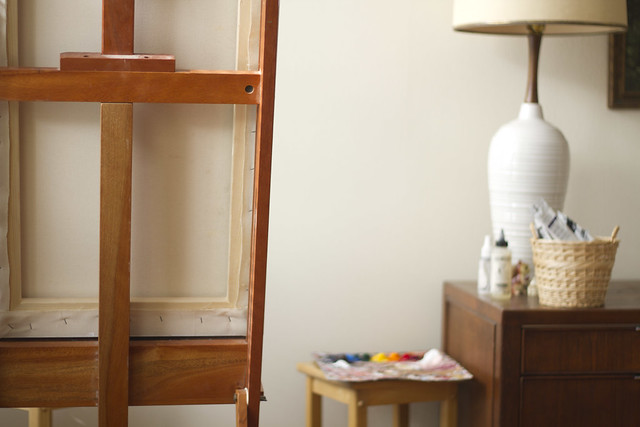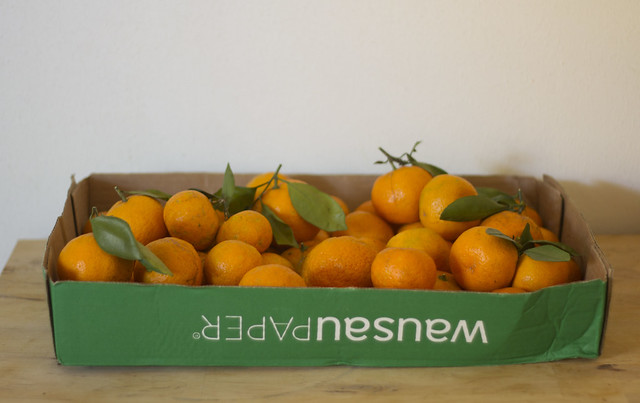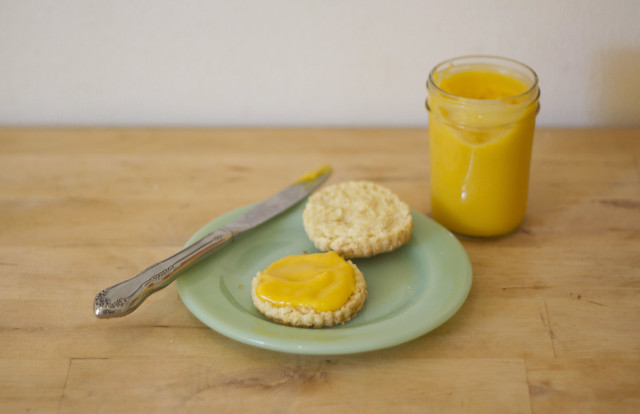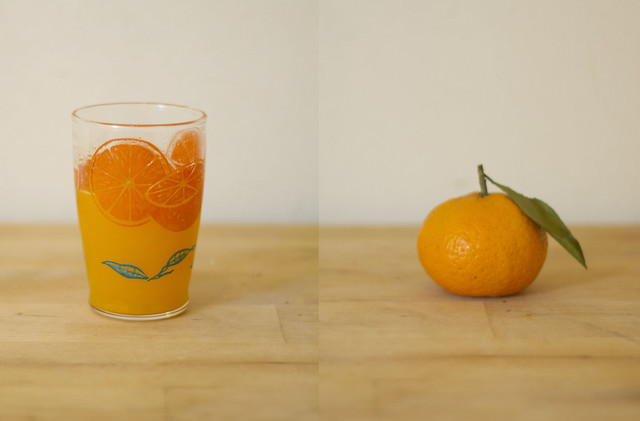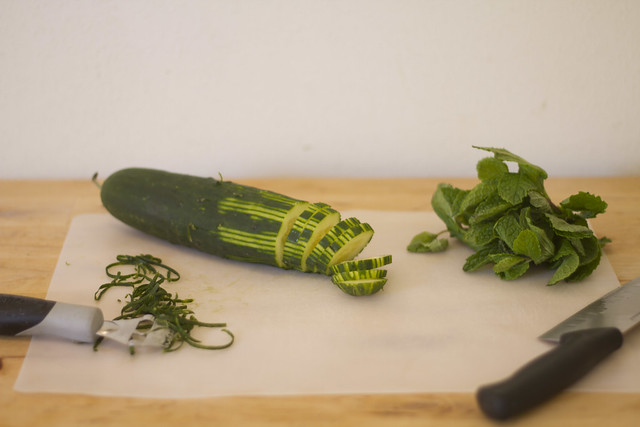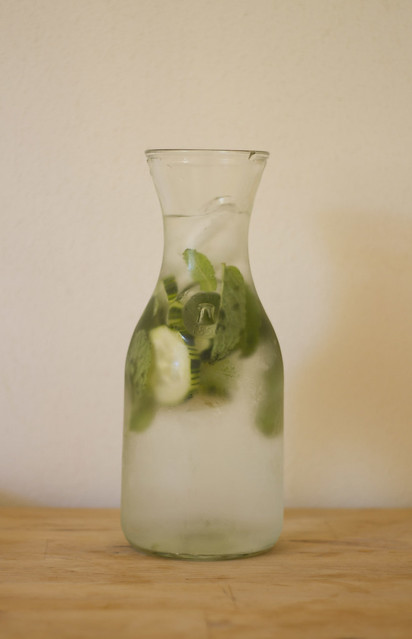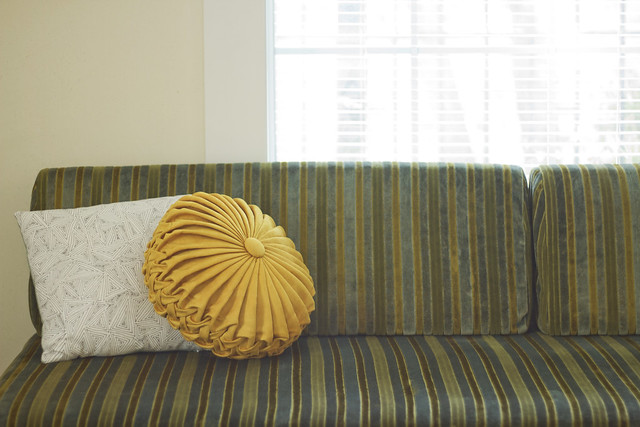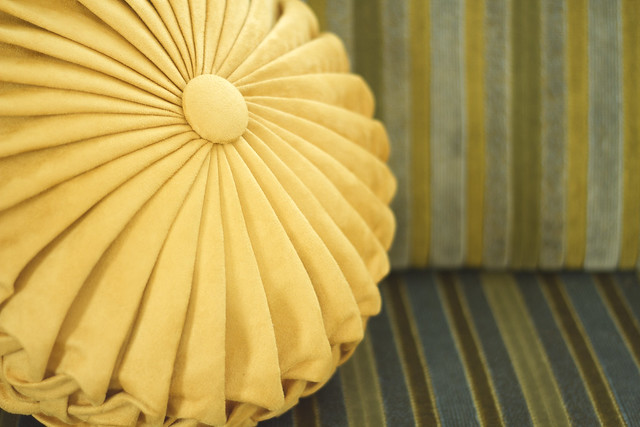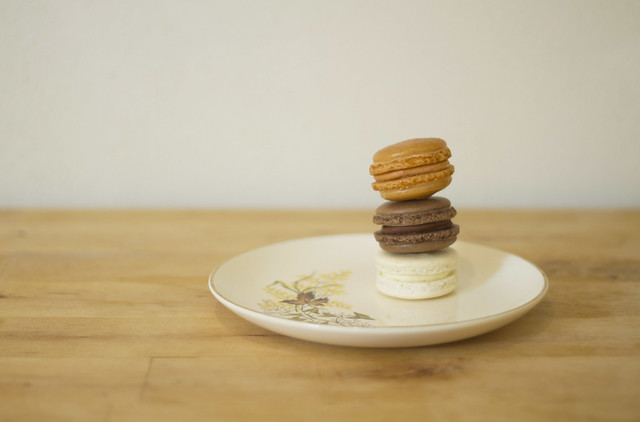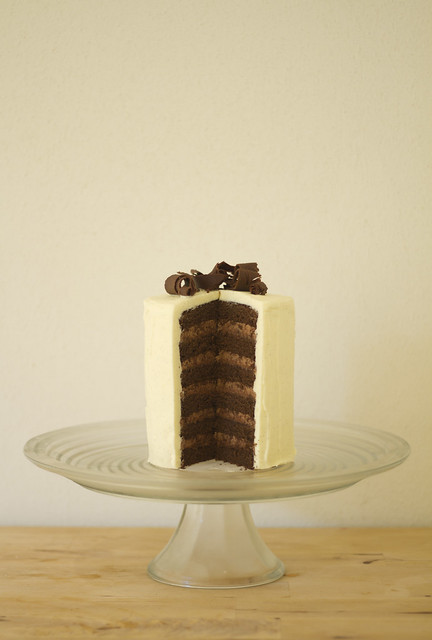I’ve got a few fabric-printing techniques under my belt, each with its own drawbacks, benefits, and results. Screen printing is a good way to cleanly and uniformly print a lot of a complex design at once, but never seems to be a good option for last-minute projects because our photo-emulsion is somehow perpetually expired. It’s also a bit more complicated and involved, since there are many steps to go through to produce a good screen and then print with it accurately, so it’s not the most economical option for really simple projects. Freezer paper stencils can produce a print similar to that of a silk screen, but can only be used once– and depending on the complexity of the design, they can take a while to make. Stamping fabric to produce a design takes just a tad longer than the time you spend carving the stamp, which, if you’re using a potato, could take just a minute. Printing with stamps is not typically clean– there tend to be artifacts like smudges and drips, too much or not enough paint, and it can be hard to achieve a lot of detail. It’s this imperfection that I find charming and lovely, and that’s why I decided to stamp some fabric.
 All you need to to print your own fabric is something to print on, something to print with, and some ink.
All you need to to print your own fabric is something to print on, something to print with, and some ink.
– My plan was to make tote bags with a simple triangle print in three different colorways, and since I already had a lot of nice bottom weight cotton on hand, I decided to just make my own rather than drive to the store to buy blank bags. I cut out the pieces for each bag before printing them so I’d have no wasted fabric.
– You can find a myriad of excellent stamp-making options at your typical craft store, but if your design is simple and you don’t care about saving your stamp, a potato’s the way to go. It’s cheap, biodegradable, and if you mess up while carving it, you can just slice a little off and start over.
– I used a screen-printing ink I had on hand, but I’d imagine fabric paint would work too. Regular old acrylic paint might do in a pinch, but won’t hold up as well to washing and will crack and chip over time.
First, make sure whatever you’re printing on is clean and ready to go. I used this tutorial to make my tote bags, and had each piece cut and the components of each bag organized before I started. Next, carve your stamp:
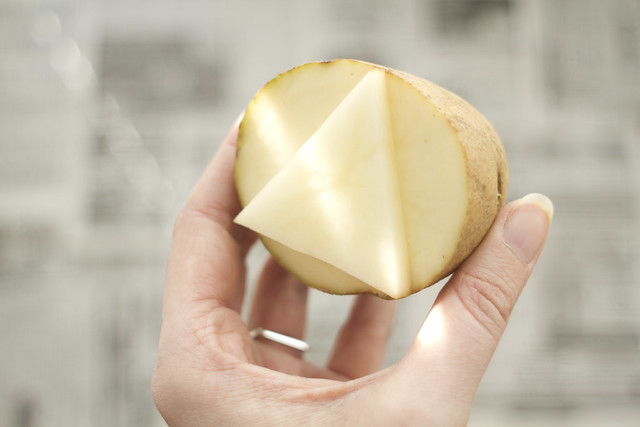 Since I wanted to create a grid of triangles, I used a fabric pen with disappearing ink to draw a single line through the middle of my fabric. This ensured my first row was straight and allowed me to stamp repeating rows of pattern accurately.
Since I wanted to create a grid of triangles, I used a fabric pen with disappearing ink to draw a single line through the middle of my fabric. This ensured my first row was straight and allowed me to stamp repeating rows of pattern accurately.
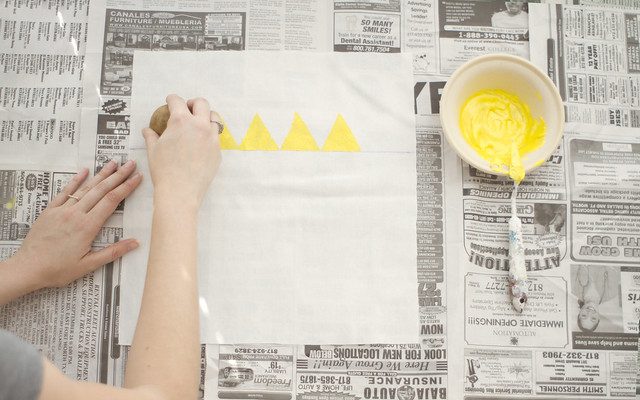 I tried dipping my potato stamp in paint, applying it with a palette knife, and painting it on with a brush; I found that the latter had the most consistent results. After I stamped the first row, I matched up the top corners of the printed triangles with the bottom corners of my stamp, and covered the entire piece of fabric.
I tried dipping my potato stamp in paint, applying it with a palette knife, and painting it on with a brush; I found that the latter had the most consistent results. After I stamped the first row, I matched up the top corners of the printed triangles with the bottom corners of my stamp, and covered the entire piece of fabric.
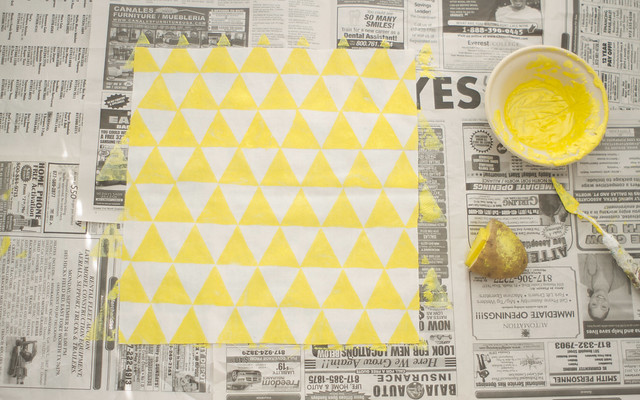 The silk screen ink I used needs to be heat-set, so I ironed each piece for a few minutes, then sewed up my bags:
The silk screen ink I used needs to be heat-set, so I ironed each piece for a few minutes, then sewed up my bags:
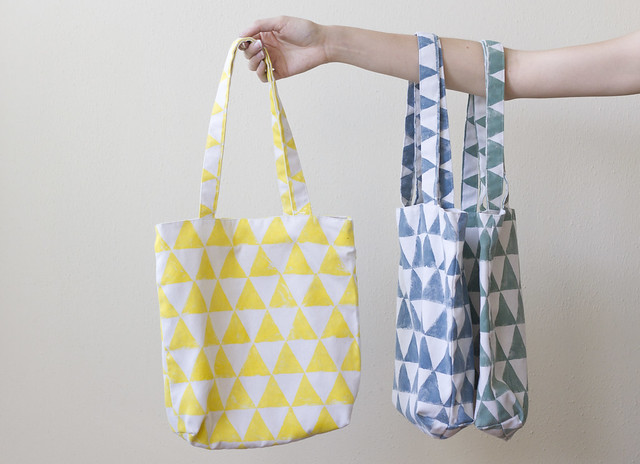 I love how they turned out, and I’ll definitely use this method again in future projects!
I love how they turned out, and I’ll definitely use this method again in future projects!
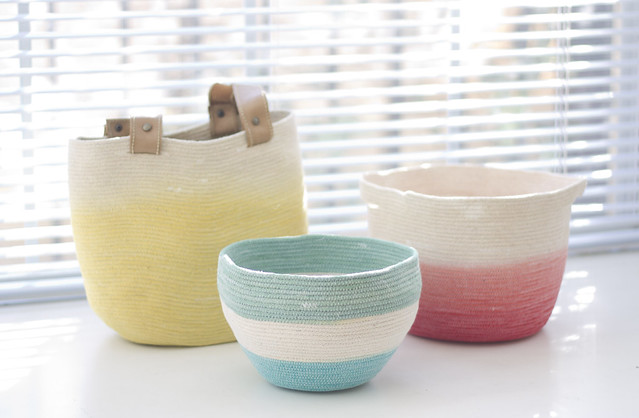 The yellow bag and the red basket both took a ride on the dyeing machine, and although it’s hard to tell with the yellow, you can see the subtle gradation of color on the red basket. The yellow bag was the first non-round cord creation of mine, and it was a bit trickier than the standard circular basket. After dyeing it, I attached a couple hand-stitched leather handles with some brass rivets:
The yellow bag and the red basket both took a ride on the dyeing machine, and although it’s hard to tell with the yellow, you can see the subtle gradation of color on the red basket. The yellow bag was the first non-round cord creation of mine, and it was a bit trickier than the standard circular basket. After dyeing it, I attached a couple hand-stitched leather handles with some brass rivets: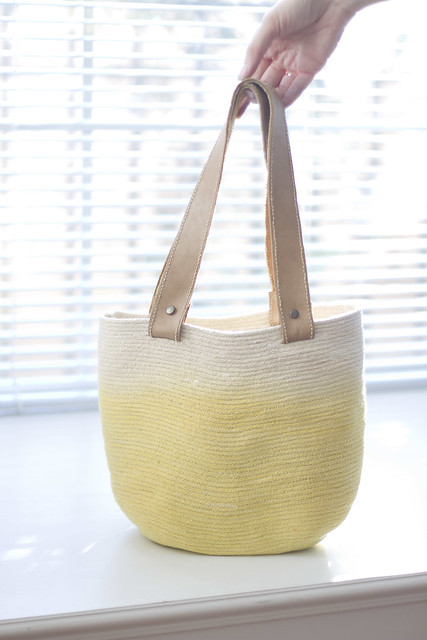 I dyed the cord for the green and blue basket before I sewed it together. I like how it turned out, but next time I’ll probably soak the cord before dyeing it so that the color disperses a little more.
I dyed the cord for the green and blue basket before I sewed it together. I like how it turned out, but next time I’ll probably soak the cord before dyeing it so that the color disperses a little more. I’ll have some more handmade Christmas presents to show you soon!
I’ll have some more handmade Christmas presents to show you soon!





